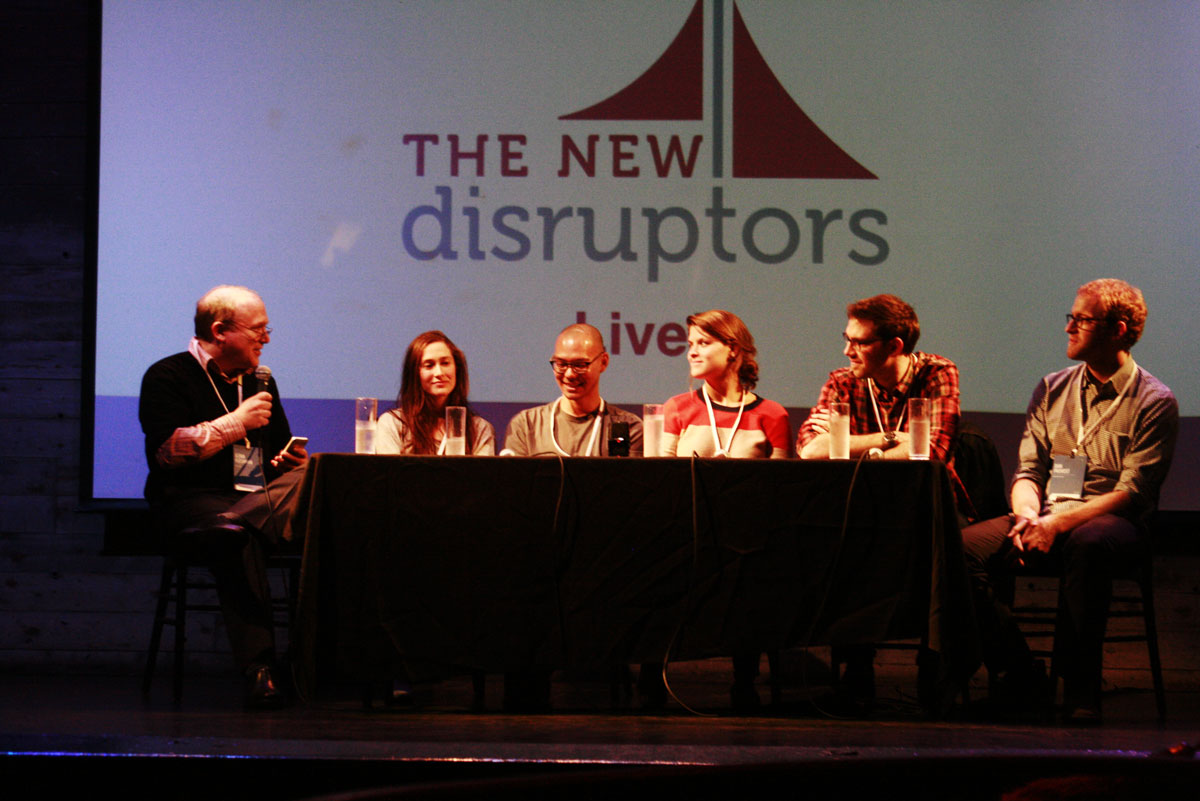Find the intersection of good design and good business by solving a problem you experience first. It’s the ultimate beginning of user testing and was a recurrent theme at something of a kickoff for the Nearly Impossible makers conference Wednesday.
It was a podcast taping featuring Tom Gerhardt and Dan Provost of product design firms Studio Neat, Che-Wei Wang and Taylor Levy of product firm CW&T, and Jessica Heltzel of publisher Kern and Burn, all of whom came out to be interviewed by Glenn Fleishman of The New Disruptors show. The taping took place at Galapagos Art Space.
Some takeaways:
- You don’t know if the creative process will get harder or easier: The Studio Neat team explained that their first product The Glif got manufactured much too easily for their own sake. They thought that was the way it always worked. They’ve since learned it isn’t.
-
When your partners come up short, you have to go the extra mile: Levy told a story of how their Pen Type-A ruler casings were initially coming back from the manufacturer with a strange oil in it, and their manufacturer refused to talk to them about how they actually made the item, so no one could figure out where the oil was coming from before the designers just cut it apart themselves.
- Businesses can be made on the highest end of precision and beauty: Studio Neat is making what may be the most fussy ice making kit ever made for the home. If you want to get super fussy about the ice for your cocktails, this kit they are working on is for you. They are working with six or seven manufacturers for all the objects.
- Trust needs to be built with your manufacturing partners: At the point at which you can create a purchase order, that’s when you feel like you’ve gotten somewhere, but you learn to feel lucky if a prototype ever comes back on spec. As Tom Gerhardt put it: “Oh, manufacturer, we agreed on what this was supposed to be. Well, this is what we made. Oh, sadness.”
- Think through the logistics of fulfillment of your crowdfunding rewards: Jessica Heltzel said that there is a point at which there are diminishing returns for adding rewards to Kickstarter campaigns because they detract from the actual product. Che-Wei Wang had a story of hand drawing 200 Kickstarter reward postcards.
- Hobbies can become jobs: “I think side projects are really important. I think you should always have them. It’s just really hard to figure out the balance,” Jessica Heltzel said. Studio Neat became a full time operation sometime after their second product appeared to be doing well on Kickstarter.
- Experimentation helps the impossible get done: “It’s often better if you don’t know enough to know how hard making a thing will be because if you knew you might not have done it,” said Hetzel, which got agreement from the full panel.
- “Nothing riles up a crowd more than silence,” Provost said of the pressure of meeting Kickstarter campaign deadlines when things are going wrong.
If you want more, Studio Neat has a $5 ebook called It Will Be Exhilarating that’s meant to get you started making things.
Join the conversation!
Find news, events, jobs and people who share your interests on Technical.ly's open community Slack
